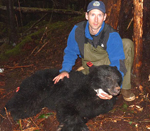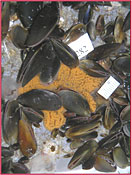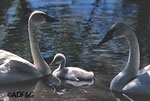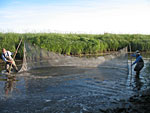Alaska Fish & Wildlife News
April 2010
Managing Black Bears
on Prince of Wales

Unlike many areas of the state where black bears are numerous and ADF&G wildlife managers are trying to reduce their numbers to bolster moose and caribou populations, managers of black bears on Prince of Wales Island (POW) are seriously concerned about apparent declines.
Historically, hunters harvested an average of 225 black bears annually from this large island in southern southeast Alaska. Word got out that POW was a consistent producer of trophy class black bears and beginning in ...
POW Bear Management ArticleContinued
Your Cousin the Sea Squirt

You may not have seen a tunicate unless you're an avid tide pooler, a scuba diver, or you spend a lot of time checking out growth below the water line on docks, rocks, and pier pilings. Tunicates, or sea squirts, as they are commonly called, live as solitary or colonial organisms. There are about 90 native tunicates species from Alaska to California; however, I am more interested in those that are introduced to Alaska and are invasive.
First, let's explore what a tunicate is. You might ...
The Sea Squirt ArticleContinued
Swans of April

In mid-April, just outside Whitehorse, Yukon Territory, thousands of migrating tundra and trumpeter swans mass at M'Clintock Bay and on nearby waters along the Yukon River. For those of us from Southeast Alaska this tremendous gathering is just about two hours up the road from the ferry dock at Skagway and going to see the swans is a rite of spring.
Weighing 28 pounds, with an eight foot wingspan, male trumpeters are the largest waterfowl on earth. Females are smaller and tundra swans ...
Swans of April ArticleContinued
Gambling Salmon
Estuaries Teach How Salmon Hedge Their Bets

Do Kachemak Bay estuaries play an important role in the lives of coho salmon? Scientists are working with smolting salmon to help us understand and better manage one of Alaska's most important resources.
Estuaries provide a wide range of habitats and play an important role in the lives of the marine and diadromous fishes that use them. Diadromous fishes are species such as Pacific salmon that use both marine and freshwater habitats during their life cycle.
Estuaries are recognized ...
Estuaries and Salmon ArticleContinued
